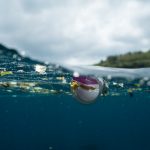
New Trends In Packaging
The strongest trends in the packaging industry all revolve around a circular economy.
Why?
Globally, it’s driven by different governmental regulation and consumer perception regarding packaging. World tends to close the door to waste, environmental groups are lobbying to stop plastic pollution in the oceans, and the EU continues to strengthen its resource protectionism.
These goals are at the core of the circular economy concept : reduce, reuse, recycle. With this regard, the EU is passing regulations faster than usual, including regulations to increase recycling rates and recycled content and laws to reduce single-use plastics. As a result, manufacturers are rushing to reach their own quotas and targets, scrambling to solve a puzzle whose edges are still ill-defined. Hereby, we wanted to provide our views and suggestions for resolving the global issues deriving from the packaging waste.
- Designing for recycling Designing for recycling is certainly imperative to future-proof one’s business, our economy and humanity itself. But first we need to ensure recyclability equals recycling, preferably in a closed-loop system. The most important is to make recyclable designs comprehensive by keeping the recycling infrastructure in mind. Decision makers have to match recycling quotas (e.g., EU recycling rate of 75% of packaging waste by 2030) to the regional capacities and to plan carefully the expansion of the recycling streams in coordination with those quotas.
- Designing for reuse A recent screening study revealed that a current version of a reusable polyethylene terephthalate (PET) bag brings a much higher impact than its single-use alternative. So much so that you would need to use the reusable bag at least 50 times to make it more sustainable. Increasing reuse is a must-win battle for optimizing resources and drastically reducing waste. Thus, there is a need to use eco-design and systems thinking to create infrastructure of scale with a massive customer-base to make the transition truly environmentally sound.
- Replacing plastics with bioplastics There is a growing tendency to equate bioplastics with biodegradable or compostable, but they are not necessarily either of those. While bioplastics are certainly interesting substitutes, using them might only shift the environmental problems by reducing the carbon footprint while increasing acidification, the water footprint or other environmental impacts. There is a need to invest more in R&D, but try to avoid competing with agricultural production- exploitation of superfluous biomass waste that has no other application.
- Replace plastics with paper The facilities for paper and cardboard recycling are already running at top capacity and would need to expand their operations to take in more recyclable waste. Still, recycled paper does not seem to significantly decrease the total environmental impact of paper, at least not based on the available data. We have to seek for new developments in the paper market, especially in terms of weight reduction.
- Shifting to mono-materials One of the biggest hurdles to achieve recyclability are coming from laminates and composite packaging. We need to analyze alternatives carefully and quantitatively to ensure that for the same packaging quality, the mono-material alternative does not in fact increase overall environmental impacts or shift burdens from one environmental impact to another.
- Reduce overall packaging consumption There are different strategies directed toward reduction of packaging consumption: development of reduced-weight packaging materials within the limits allowed by its purpose, design of a new product line with reduced product shelf-life, and loud communication with customers to help them understand the reasoning behind the changes to make sure that the net benefits outweigh the drawbacks.





